Disclosure: Meeple Mountain received a free copy of this product in exchange for an honest, unbiased review. This review is not intended to be an endorsement.
I stopped, and stared.
I was walking through the main hall at SPIEL ‘22, and even in a big crowd, I had to stop for a moment. I caught myself staring at the cover art for The Great Split (2022, Horrible Guild) and simply marveled at the slick art deco stylings of the woman on the cover.
The game’s artwork, by Weberson Santiago, is quite a hook. The beautiful box carries over into the character cards each player gets as they assume the persona of thieves trying to score the biggest haul of riches to win the game.
The Great Split is not exactly the game I thought it would be, but the game’s best mechanic leads to interesting moments in this medium-pace party game.
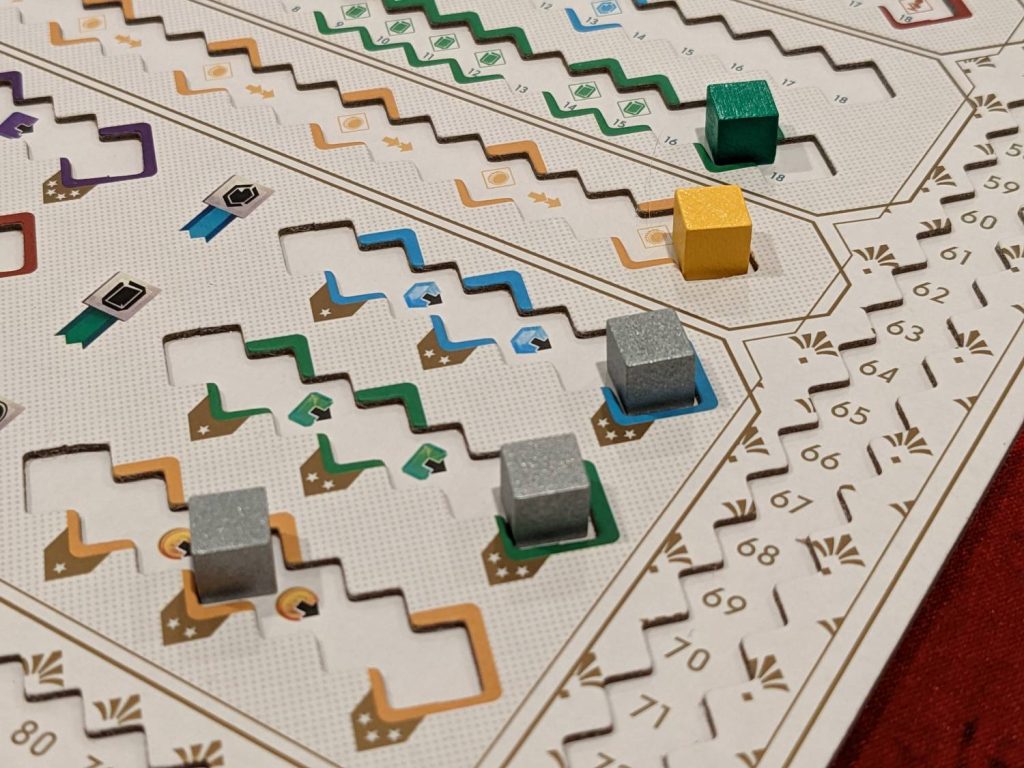
Splitsies
Over six rounds, players will use a fantastically thick player board to track 10 different categories and their overall level of prestige (points). The player board—visually quite busy, with numbers everywhere and more of Santiago’s iconography detailing which track and which contracts are available—is where you’ll spend most of your time interacting with The Great Split.
The game’s best feature? Splitsies.
In a round, players have a number of Resource cards, usually 4-7, detailing the symbols from the player board. All the Resource cards represent chances to go up on their respective Resource tracks. After being dealt a single new Resource card to start each round, players have to split their hand in half using a “Splitter card” that will determine an offer to the player on your left.
After sliding the Splitter card in-between the cards to offer a trade, everyone stuffs their offer into a handy, cardboard wallet and simultaneously passes their wallet to the left. Chatter ensues. Sometimes, it’s really funny to see what a person thinks about their offer. Smack talk may follow. “This offer is garbage,” you might say.
“Oooh…that’s pretty juicy” is something else you might say. This is particularly true when the offer forces your hand, because you are trying to advance along certain tracks on a turn before a mid-game scoring takes place for, say, the gems track or maybe the tome (books) track.
You’ll spend a moment or two considering the offer before taking all of the Resource cards on one side of the Splitter card, then returning the rest plus the Splitter card to the original owner. At the same time, you’ll get back your original offer from the player on your right with the half of your offer they took, leaving you with the cards that will be scored on your player board.
After a bit of accounting, you’ll keep your cards from that round before moving into a new round. After rounds 3, 4, and 6, you’ll do a round of scoring some of those tracks, including an artwork track tied to an art market slider that is always going up. In some games, that slider will go up a little, making art track scoring a little easier. In other games, that variable will be harder to keep up with.
But otherwise, a round’s loop is simple: deal a card, split cards, take back offers, move up tracks. A game’s 2-7 players can usually go through an entire game in 30-45 minutes.
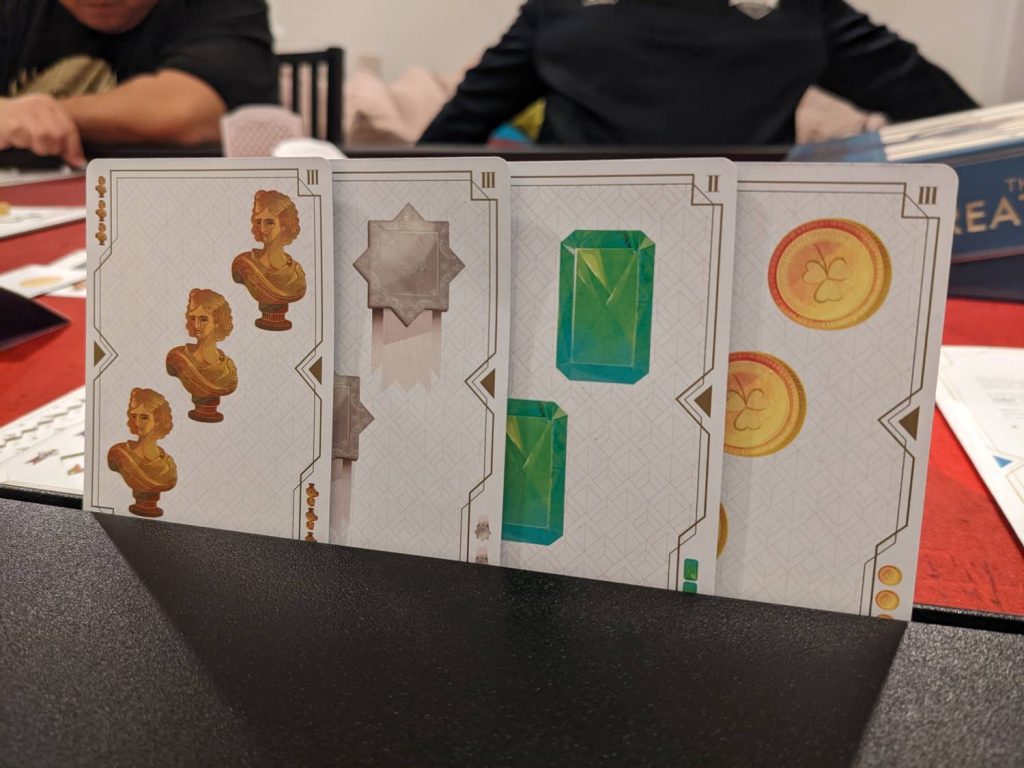
Combo Tracks
Anyone who’s had the chance to play even one of the games in Wolfgang Warsch’s Ganz Schӧn Clever (That’s Pretty Clever!) series has fallen in love with going up tracks, which then trigger powers and/or combos on other tracks.
The Great Split has a little bit of that here, so it shares some similarities with track management. Also like That’s Pretty Clever!, there’s a bit of randomness to the deals you’ll be making and the tracks you’ll be utilizing. (In Warsch’s game, you have tracks, but those tracks are driven by dice.)
Even if your life goal is to go up the artwork track, you’ll need cards to get there. While you have the option to flip any card you draft and go up on the gold track by one space (or take a single point), that is usually not the most efficient way to lean into the Resource cards you’ll be getting because in later rounds those cards have two, three, or more of the same Resource on each card. (The Splitter card is also used as a single wild resource each time you score in a round.)
There’s also not much variety in the setup; your Character tile gives you a slight bump on a track or two, and it gives you a Contract in one or two of the five tracks. Otherwise, each game of The Great Split relies on the Resource cards you are dealt, and the Resource cards offered by the player on your right.
A note about Contracts: these are a way to score a lot of end-game points. Each of the player board’s five top tracks (for gems in two colors, artwork, tomes and gold) are outlined in a heavier color to call out what you can multiply by a matching track’s Seal spaces at the bottom of your player board. This could max out your tomes track by making each Contract worth four points, instead of zero or one.
There are some flaws in the idea that you are negotiating with your neighbor to offer cards that will incentivize taking one half of your offer over another. In my plays of The Great Split, everyone is scoring a lot of points, and one or two players will do better if they are able to lean into the boosts received on their Character tile.
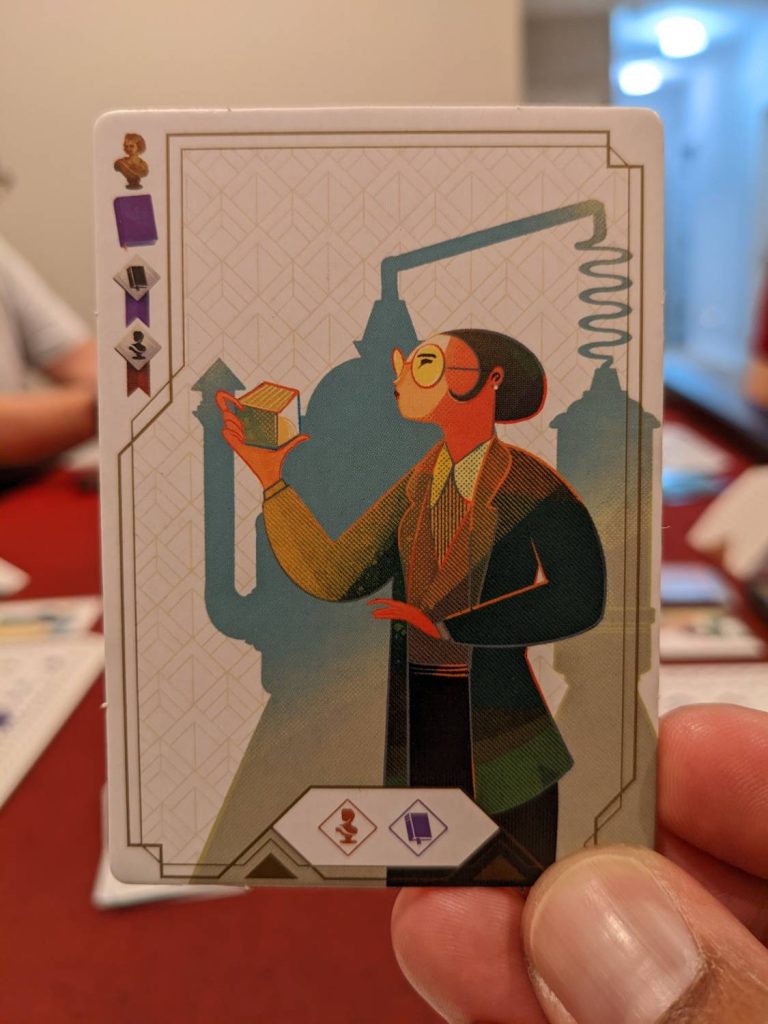
Beautiful, Mildly Interesting, Tracks
The Great Split offers a good time, but I wish there was more genuine player interaction.
Here’s what I mean. It’s fun to split Resources to make an offer to your neighbor, to see what they will take. But, they HAVE to take something, and everything makes your tracks go up. No one is going to ever offer a truly insane deal in those offers (by, say, splitting six cards so that the choice is five cards, or the other card), because even if the cards are the wrong Resources for the tracks you want to advance, you can always flip them to score points or go up on the gold track.
So, everyone is scoring in small-to-medium bunches all game. Across 12 individual scores (across my games of 3, 4, and 5 players), only one of the 12 scores came in under 100 points. You only receive one fresh card each turn—your hand mostly carries over between turns—so you’ll always be offering some of the same cards to your neighbor.
Getting beyond that point, the production is gorgeous. Making offers and moving my Resource trackers up each turn has a nice feel of accounting to it, especially if you love spreadsheets. (I love spreadsheets. Khôra: Rise of an Empire has so many tracks it will make you think you’re at work, but I’m cool with that.) I’ve got my own little board, so that part of each round is quiet, solitary magic.
The Great Split plays up to seven players, and you’ll be excused for thinking the game should feature more haggling between thieves trying to split a big payday. This is not that game. But it is enjoyable enough to recommend for those looking for a long filler introduction into “I cut, you choose” games such as Hanamikoji and Bequest.
A note about playing The Great Split at three players: this is maybe the best way to play the game, because in a three-player game, you are truly interacting with everyone! I really enjoyed that single play at three. I could suss out which cards the player to my left always needed, but tried to play a bit of keepaway with the player on my right. Some of the cards in that game stayed “between us” (the guy to my left and I), and I was OK with that. With 4+ players, you literally never interact with at least one player, which is a minor shame.
The Great Split shines best as a family-weight game that can and should be played with older kids, especially when one considers that it’s almost impossible to not score a ton of points. That’s where it will reside for now at my home: the family game closet!


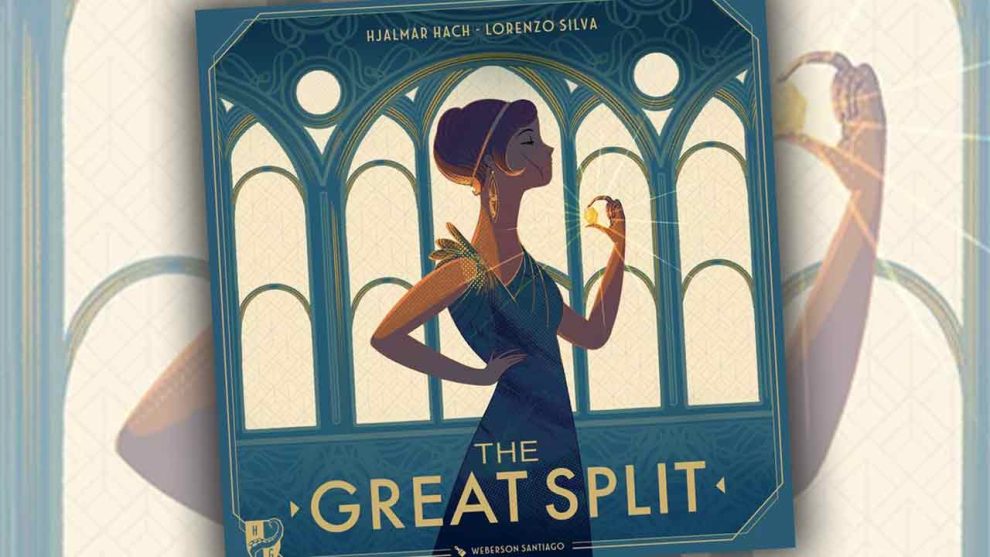

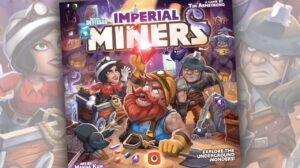

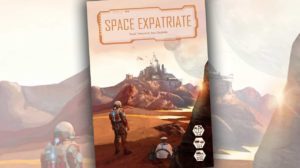





Great write up! Keep up the fantastic work. Lovin the deco look on this. 🙂